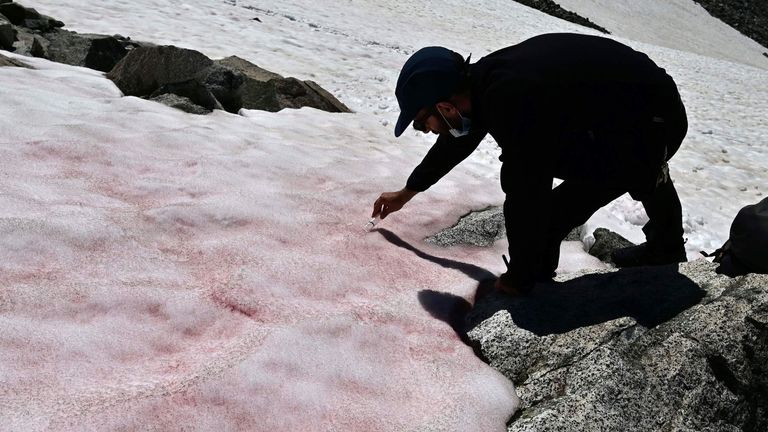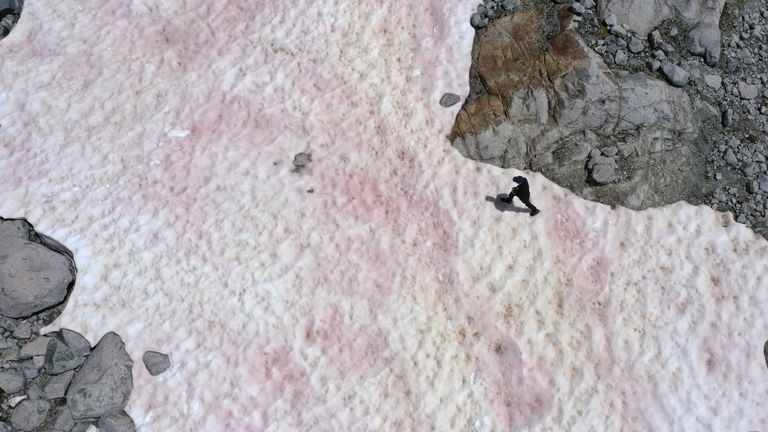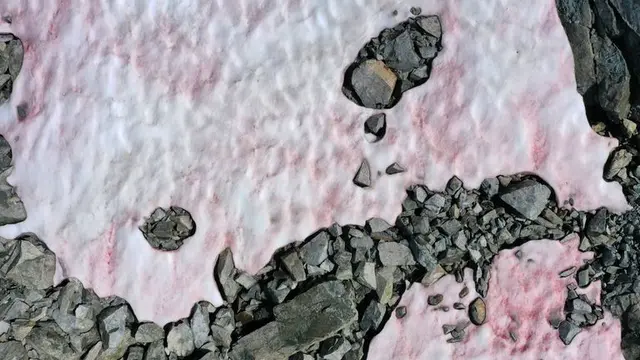An Alpine glacier is turning pink in colour because of an algae that accelerates the effects of climate change, scientists have said.
An investigation has been launched after pink ice appeared on parts of the Presena glacier in the Italian Alps.
Biagio di Mauro, a scientist at Italy's National Research Council, told The Guardian the colour is caused by a plant, which is more commonly found in
Greenland
's so-called Dark Zone, where the ice is also melting
.

Image:Biagio di Maio, researcher at CNR (National Research Council), takes samples of the pink colored snow
When Ancylonema nordenskioeldii appear in ice, it absorbs the heat and melts more quickly.
As the ice fades away, more algae appear, giving them vital water and air and adding red hues to the white ice.
In this case, the discolouration appeared at the Passo Gavia at 2,618m (8,590 ft).
Mr Di Mauro said: "Everything that darkens the snow causes it to melt because it accelerates the absorption of radiation.
"We are trying to quantify the effect of other phenomena besides the human one on the overheating of the Earth."
Mr Di Mauro - who has also studied the algae at the Morteratsch glacier in Switzerland - said hikers and ski lifts could also have an impact on the plant.

Image:Pink coloured snow on the Presena glacier near Pellizzano in the Alps
"The algae is not dangerous," he added.
"It is a natural phenomenon that occurs during the spring and summer periods in the middle latitudes, but also at the Poles."
 简体中文
简体中文

